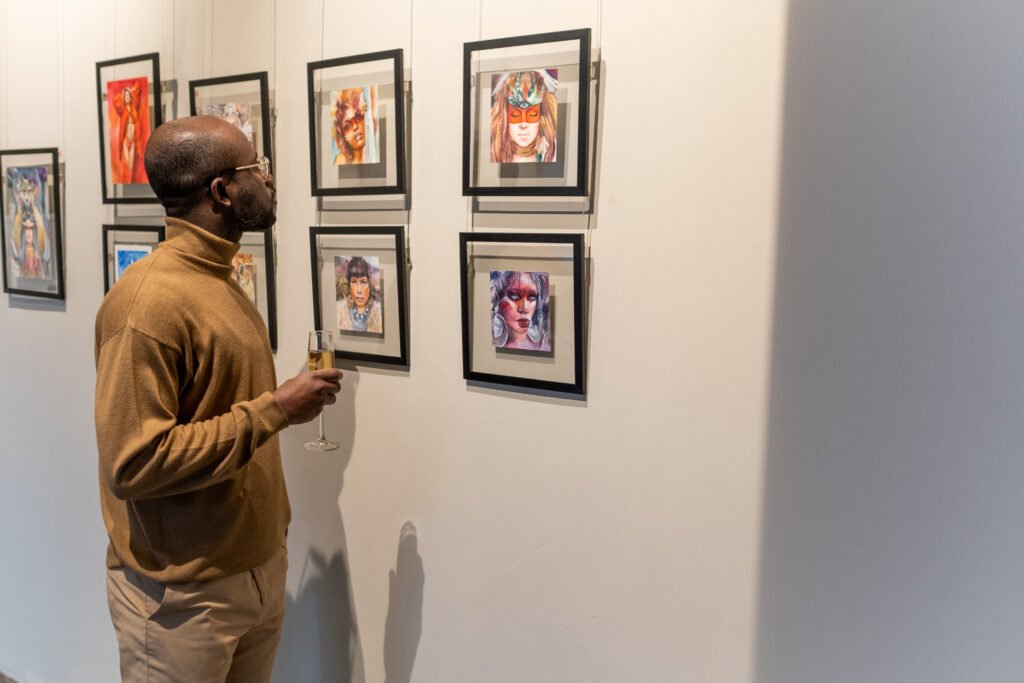The art market is a complex universe where the value of an artwork depends on much more than its visual appeal. Several factors, often invisible to the untrained eye, directly influence the prices seen in galleries, art fairs, and online platforms. Understanding these elements is essential for anyone looking to buy art with confidence and a strategic mindset.
Whether purchasing in person or choosing to buy art online, it is important to know the criteria that determine an artwork’s market value. This applies to both beginner collectors and experienced investors, especially when the focus is on abstract art, which is highly valued for its visual impact and investment potential.
1. Authenticity and Provenance
The first and most decisive factor for determining value in the art market is authenticity. Artworks that come with certificates of origin, exhibition history, and public documentation tend to command significantly higher prices. Provenance ensures the work is original, reducing the risk of fraud.

According to The Art Market 2024 report by Art Basel and UBS Group, around 18% of buyers avoid transactions when the provenance of a piece is unclear. The report also notes that experienced collectors often invest in consultants or authentication services before finalizing a purchase — particularly in the abstract art sector, where the lack of figurative elements can lead to confusion regarding authorship.
The book Provenance: How a Con Man and a Forger Rewrote the History of Modern Art by Laney Salisbury and Aly Sujo (2009) illustrates how forgery can destabilize the art market and damage the credibility of respected institutions. Therefore, when buying art, it is crucial to ensure the work’s origin is well documented, especially in online transactions.
2. Artist’s Relevance in the Art Market
An artist’s standing in the art market is essential. Consider established artists. Their works are in museum collections. Or they are in high-profile auctions. Their pieces generally appreciate greatly in value. Emerging artists may also be a strong investment. Their potential is high if they are in good shows. This includes relevant curations or international exhibitions.
A study by a Rotterdam school argues a key point. The study is The Artist as a Brand. It argues that artists should be seen as brands. Their market position directly influences pricing. A strong digital presence helps build this brand. Audience engagement is also important. So is participation in group shows or art fairs.
This is particularly true for abstract art. Abstract art requires a more trained eye. One must evaluate its technical innovation. One must also evaluate its authorial consistency. Savvy collectors know something important. This is true when buying art online. You must examine the artist’s career. Check their education, awards, and collaborations. This is just as important as evaluating the art.
3. Cultural Context and Market Demand
Finally, the value of a work of art is closely linked to social context and market demand. Artistic movements gain or lose momentum depending on contemporary debates, societal shifts, and even the global economy. Abstract art, for example, has grown in popularity due to its versatility and its ability to convey emotion without literal representation — aligning with the current desire for expressive freedom and meaningful decor.

The study The Psychology of Collecting Art, published by the Stanford Graduate School of Business, found that more than 60% of surveyed buyers choose artworks based on emotional connection and decorative potential. This helps explain why the best places to buy art today combine physical spaces with online platforms — offering access to works that reflect the cultural climate of the moment.
Rising demand for pieces that unite aesthetic value with deeper meaning has propelled the art market forward. When an artist or style becomes a trend, its value can increase quickly. Therefore, when buying art online, understanding the cultural context is just as important as analyzing the piece itself.



